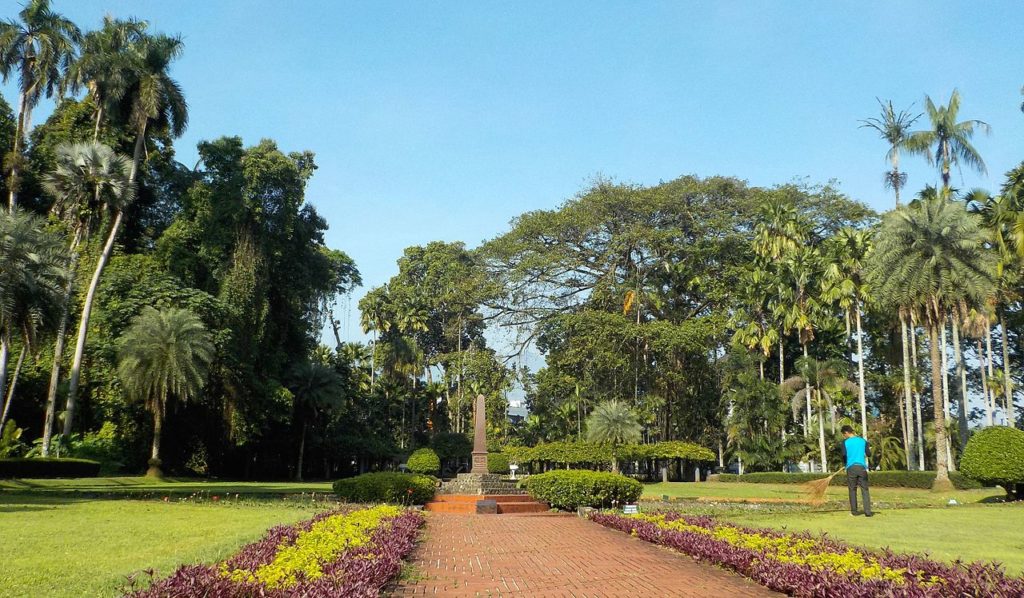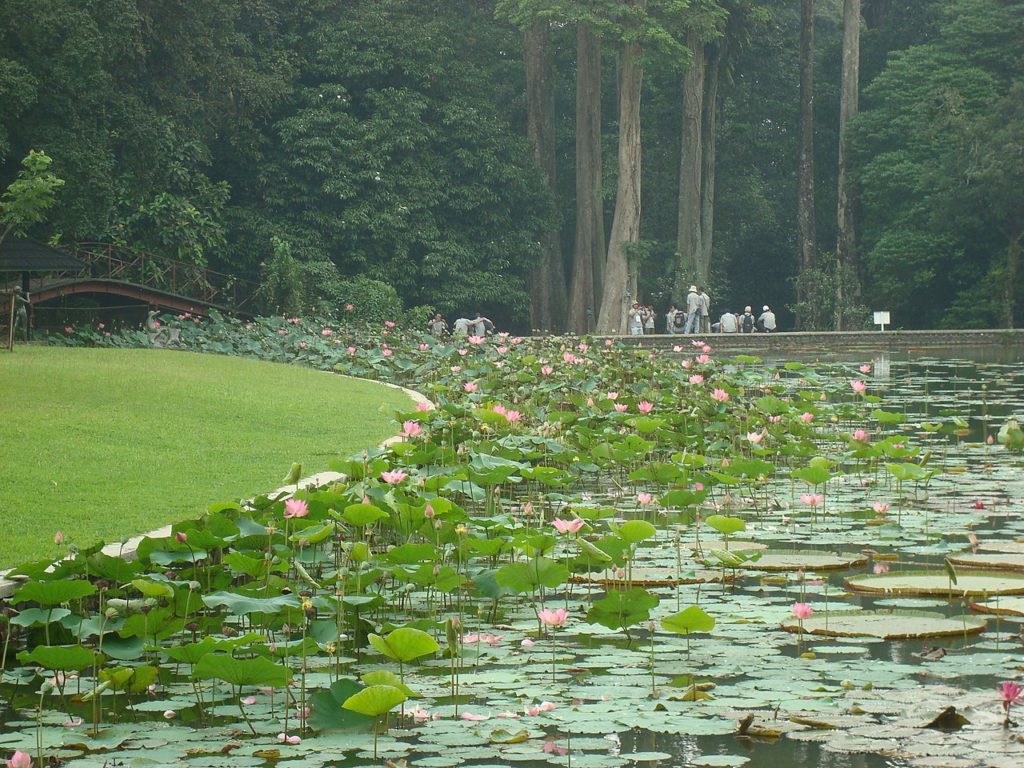It covers an area of 87 hectares (210 acres) and contains 13,983 different kinds of trees and plants of various origins, currently operated by the Indonesian Institute of Sciences.
 The area that is now Bogor Botanical Gardens was part of the samida (man made forest) that was established at least around the era when Sri Baduga Maharaja (Prabu Siliwangi, 1474-1513) ruled the Sunda Kingdom, as written in the Batutulis inscription.
The area that is now Bogor Botanical Gardens was part of the samida (man made forest) that was established at least around the era when Sri Baduga Maharaja (Prabu Siliwangi, 1474-1513) ruled the Sunda Kingdom, as written in the Batutulis inscription.
 This forest was created to protect seeds of rare trees, but after the Sundanese kingdom was destroyed in the 16th century, the garden was abandoned until 1817, under the proposal of two botanists, William Kent from the Netherlands and James Hooper from Kew, the Dutch East Indies government decided to reopen the garden.
This forest was created to protect seeds of rare trees, but after the Sundanese kingdom was destroyed in the 16th century, the garden was abandoned until 1817, under the proposal of two botanists, William Kent from the Netherlands and James Hooper from Kew, the Dutch East Indies government decided to reopen the garden.
During its operation, the garden flourished under the leadership of many renowned botanists including Johannes Elias Teijsmann, Rudolph Herman Christiaan Carel Scheffer, and Melchior Treub.
 Bogor Botanic Garden’s collection of orchids focuses primarily on wild species, numbering approximately 500 species from over 100 genera. Grammatophyllum speciosum, the largest orchid species in the world is also part of the collection. A small patch of the botanical garden is dedicated to desert plants. There are roughly 100 species of cactus, agave, yucca and succulent plants from around Asia and the Americas.
Bogor Botanic Garden’s collection of orchids focuses primarily on wild species, numbering approximately 500 species from over 100 genera. Grammatophyllum speciosum, the largest orchid species in the world is also part of the collection. A small patch of the botanical garden is dedicated to desert plants. There are roughly 100 species of cactus, agave, yucca and succulent plants from around Asia and the Americas.
Situated nearby the laboratory and main gate of the garden, the museum started as a small laboratory founded in August 1894 and was used as a research facility for pest insects control. The museum has an area of 1500 meter square and contains preserved collection of 10,000 species of insects and 2000 species of other fauna.
According to Wikipedia














